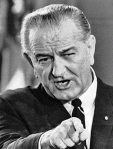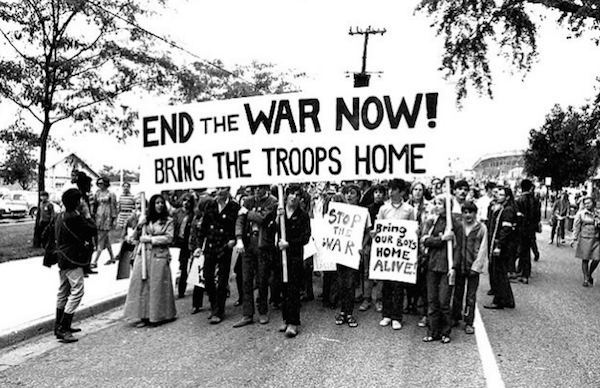Intro
The Cam Ne incident took place on August 3, 1965 in the south of Vietnam during the Vietnam war. The Vietnam war was the first “uncensored” war that had the necessary technology to show everyday citizens the horrors of war. Since the U.S. government had denied involvement in Vietnam, journalists had free reign to report on the things going on around them. This gave journalists access to extremely interesting stories and pictures on a regular basis. Pictures and stories that the military and the government did necessarily want released. Cam Ne was one of many incidents that really helped to solidify public opinion against the Vietnam War. With reporters able to report on anything around them America’s uncensored war was exposing wrongdoing like no other war before or since. The Cam Ne incident was brought to the public light by a man named Morley Safer who was a reporter for CBS at the time.
What Happened
According to excerpts from Safer’s personal account of Cam Ne found on PBS.org a company of marines was heading out to destroy a village named Cam Ne. There had been small arms fire coming from one or multiple buildings in the village so the marines had orders to destroy it.Safer who had never witnessed a mission like this asked to tag along and the company agreed. When the company arrived at Cam Ne they found mostly just women and children but nobody of military age. Although they did detain four men they were older than the average Vietcong fighter according to safer.
As the Marines began burning down the village Safer and his cameraman watch on in horror as the villagers mourned the loss of their homes. As the marines walked into the village further, burning as they went, they had no way to communicate to these people the reasoning behind what they were doing. The confused Vietnamese women and children looked on as these large American men armed with flamethrowers and zippo lighters torched everything they once knew. Safer went on to state that two marines were injured in the day’s activities but they were both shot from behind, which safer then guessed was due to friendly fire. They burned the whole village down and then they simply left as quickly as they had come.
Footage
Reaction Back Home
As Safer left the area he started writing his story about what he had just witnessed. When he finished his preliminary story he sent it to his CBS affiliates. When the story was released, which was just a description of the events, the military gave many different explanations behind the burning of this village. Some included that this was just merely a training exercise and some flatly denied it even happening. Because there was no digital film at the time it took a few days longer for the film to reach the U.S. and get distributed to the public. When the film was released there was backlash from the American public. American citizens for one of the first times, were seeing the reality of war and what our soldiers do in times of war. Because of the freedom journalists had in Vietnam there was nothing that the government could do to stop the release of this footage. This was the first time the average citizen got to see what really goes on in a war zone. Americans were used to seeing their soldiers liberating and saving people, not destroying the homes of crying women. The graphic images of “The uncensored war” was beginning to have an affect on public opinion. Not only on public opinion but it also helped to spur on more stories carried out by journalists in Vietnam.
The most notable quick reaction that Safer received was in the form of a phone call to his boss, Frank Stanton, from the President of the United States of America, Lyndon B. Johnson. This is an excerpt in Safer’s own words how the situation was described to him:
“He (the president) called Stanton the following morning, very early, and Stanton hadn’t seen the broadcast the night before. As I understand it, the president said, “Frank?”  “Yeah, who is this?” He said, “This is your president.” “Yes, Mr. President?” “You know what you did to me last night?” “What did I do, sir?” “You shat on the American flag.”
“Yeah, who is this?” He said, “This is your president.” “Yes, Mr. President?” “You know what you did to me last night?” “What did I do, sir?” “You shat on the American flag.”
Affect on Journalism
This event stands as one of many events that turned the opinion of many people in the U.S. against the war. This incident was one of the first negative pictures that people had of the war even though there had been an American presence there for many years. With the freedom to go anywhere and film whatever they please journalists really started to open up the horrors of war to people around the world. Whether it was exposing the brutality displayed by both sides, or the poor conditions our young soldiers had to live in, the graphic stories of Vietnam exposed the truly terrible reality that war is. The freedom journalists had in the Vietnam War did not last however, in the first gulf war journalists had much tighter restrictions placed on them and many images were censored by the government. The government even made it a point to explain to the American public that the gulf war would not be another Vietnam.

Morley Safer Cam Ne closing statement
“Today’s operation shows the frustration of Vietnam in miniature. There is little doubt that American firepower can win a military victory here. But to a Vietnamese peasant whose home means a lifetime of backbreaking labor, it will take more than presidential promises to convince him we are on his side.”
Sources:
Hallin, D. C. (1986). The “Uncensored war”: The media and Vietnam. New York ; Oxford: Oxford university press.
Hammond, W. M. (1988). Public affairs: The military and the media, 1962-1968. Washington, D.C.: Center for Military History, United States Army.
Safer, M. (2003). Reporting America at War. Retrieved February 25, 2016, from http://www.pbs.org/weta/reportingamericaatwar/reporters/safer/camne.html
Brush, P. (2006). What Really Happened at Cam Ne | HistoryNet. Retrieved February 25, 2016, from http://www.historynet.com/what-really-happened-at-cam-ne.htm
Youtube video of Safer and the storyhttps://www.youtube.com/watch?v=mjP9C_fODfI
More info on Cam Ne (Video)http://www.cbsnews.com/news/report-us-forces-cam-ne-vietnam-50-years-ago/
Streitmatter, R. (1997). Mightier than the sword: How the news media have shaped American history. Boulder, CO: Westview Press.
www.popularresistance.org Picture



